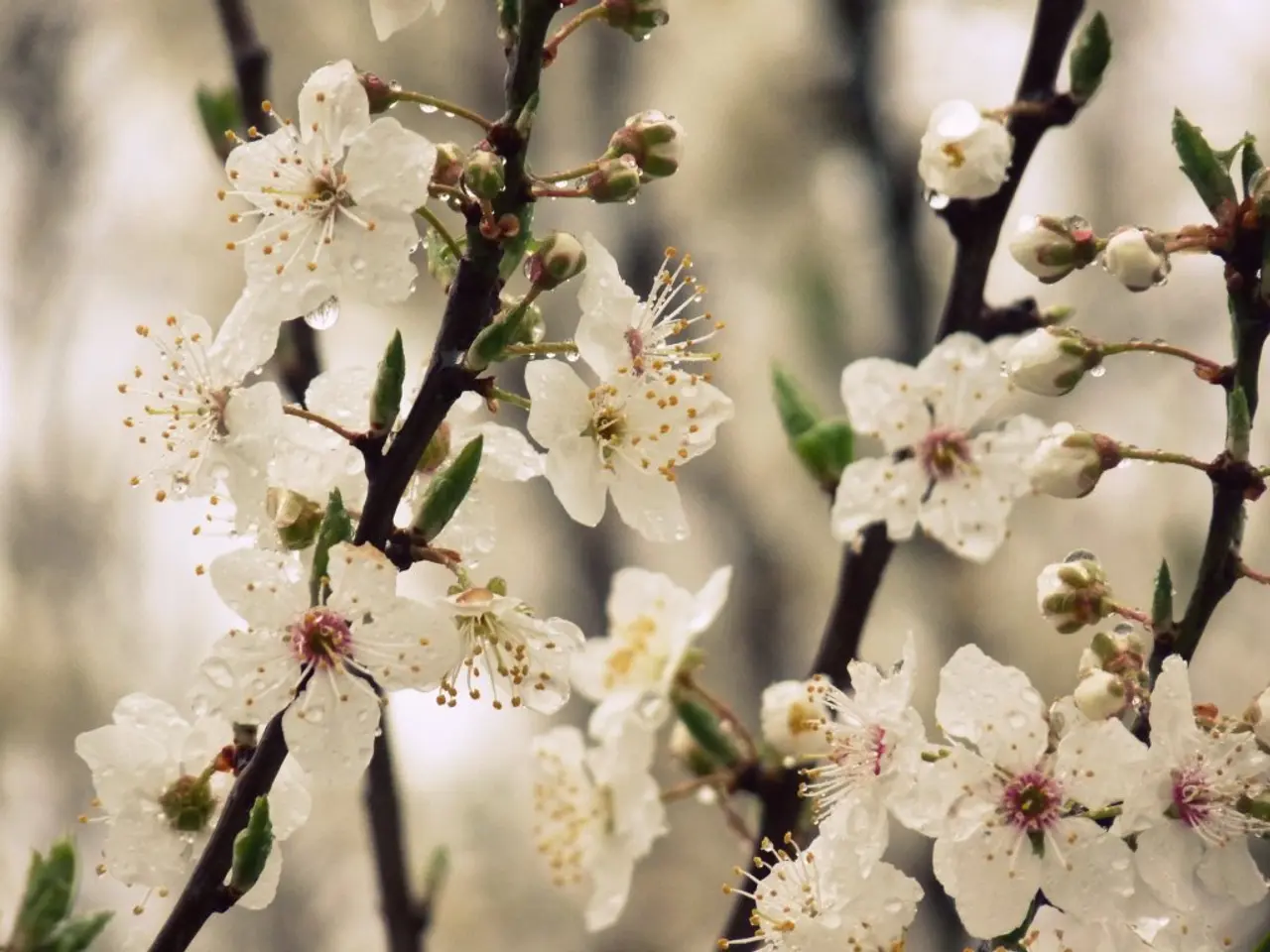Harvesting Wild Black Locust (Robinia pseudoacacia) Trees
The Black Locust (Robinia pseudoacacia), a native of North America, is a remarkable tree that has found a home in many gardens across the world. Its unique features and versatile uses make it a popular choice for nature enthusiasts and home cooks alike.
In late spring or early summer, the Black Locust produces stunning clusters of white flowers, up to 8 inches long. These individual flowers, reminiscent of pea blossoms, measure about 0.75 to 1 inch long and feature a distinctive yellow spot on their upper petal.
The twigs and small branches of the Black Locust are smooth or finely hairy, with paired spines at the leaves or leaf scars. This can help distinguish it from other similar trees, such as the Chinese Scholartree.
The Black Locust can grow to impressive heights, with trunks reaching about 80 feet tall and 20 inches in diameter. The main trunk is often crooked and features thick, deeply furrowed, corky, brown bark.
One of the most intriguing aspects of the Black Locust is its fragrant blooms. These sweet, aromatic blossoms are best harvested before they're fully opened or within a few days of opening, as they become bitter after this period. The blossoms can be used in a variety of dishes, from salads and stir-fries to fritters, crepes, sorbet, cookies, and muffins. They can also be preserved as jelly, dried for later use, or used to make tea. Dried blossoms can even be used in herbal soaks and baths.
The Black Locust leaves are pinnately compound, with 3 to 9 pairs of opposite leaflets plus a terminal leaflet. The leaves are typically 7 to 18 inches long and 4.75 to 6 inches wide. The individual leaflets are usually oval to elliptical and 0.75 to 2 inches long.
The Black Locust can sometimes be mistaken for the Clammy Locust, but it differs in several easy-to-spot ways, such as the number of leaflets, the color of flowers, and the presence of sticky hairs on the plant.
The Black Locust pods are pea-pod-like seed cases that are usually 2 to 4 inches long. In midsummer, the cases are green or have some purplish coloring. In fall, they mature to dark brown or almost black, dry, and split open to release several seeds. The pods often remain on the tree through the winter.
It's important to note that the Black Locust can sometimes be mistaken for the Honey Locust. However, it differs in several noticeable ways, such as the shape and number of leaflets, the size of thorns, and the color of flowers.
The Black Alder (Schwarze Erle, Alnus glutinosa) is a tree native to Germany and other parts of Central and Eastern Europe. It naturally occurs in wet environments, such as streams, meadows, and forests, and prefers moist soils like riverbanks, floodplains, and peatlands.
In conclusion, the Black Locust is a fascinating tree with a rich history and numerous practical uses. Whether you're a gardener, a cook, or simply a nature lover, the Black Locust offers something for everyone.
Read also:
- Abu Dhabi initiative for comprehensive genetic screening, aiming to diagnose over 800 conditions and enhance the health of future generations in the UAE.
- Elderly shingles: Recognizing symptoms, potential problems, and available treatments
- Protecting Your Auditory Health: 6 Strategies to Minimize Noise Damage
- Exploring the Reasons, Purposes, and Enigmas of Hiccups: Delving into Their Origins, Roles, and Unsolved Aspects





